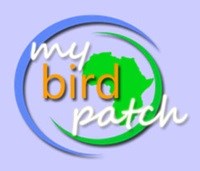
Subscribe & Follow
Advertise your job vacancies
Jobs
- Customer Service (Work from Home) UK market Johannesburg
- Administrative Assistant Cape Town
- Station Operator Hartbeespoort
- Digital Marketing Lead and Coordinator Pretoria
- Sous Chef George
- Travel Agent Call Centre Consultant Tshwane
- Mobility Account Specialist Cape Town
- Sales Executive – Live Event Audio Visual and Technical Production Cape Town
- Personal Assistant to CEO - Hospitality and Property Sector Cape Town
- E-commerce Marketing Intern Simondium
Plan to build a bird-friendly corridor in Cape Town
The City of Cape Town and an MSc student from Stellenbosch University have embarked on an ambitious project to create a corridor of bird-friendly gardens from the Cape Peninsula Mountain Range to the isolated Rondevlei Nature Reserve in the centre of Cape Town.

The idea is to relink the broken migration routes especially for nectar-feeding birds, with the gardens acting as stepping-stones across densely-populated urban areas.
Some species, such as malachite sunbirds and sugarbirds, are particularly sensitive to urbanisation and do not venture far into the urban areas that now separate the Table Mountain National Park from the Boland Mountains and from the smaller reserves on the Cape Flats. Yet these birds are important pollinators of more than 350 plant species in the Cape Floral Region.
Bongani Mnisi, the MSc-student responsible for this project, is also a regional manager in the Biodiversity Management Branch of the City of Cape Town's Environmental Resource Management Department. For the past six years, he has been managing the largest part of the city's biodiversity network, including three nature reserves. But this project is not only about birds.
Growing up in Bushbuckridge in Mpumalanga, only 45 kilometres outside the Kruger National Park, he had limited access to natural areas. While this inspired him to study nature conservation at Cape Peninsula University of Technology (CPUT), his dream was to pursue research where he could combine his love for nature with societal development and youths.
Do birds really matter?
With Professor Anton Pauw from the Department of Botany and Zoology at Stellenbosch University as study leader, his MSc study is now part of a larger project, which is an attempt to answer the ecological question of whether birds really matter. Dr Sjirk Geerts, from the Department of Biodiversity and Conservation at CPUT, acts as co-supervisor.
"My research will try to answer important ecological questions, but it also looks at the convergence between society and nature. This is a community-based project, involving local schools, local government and civil society. In this way we hope to identify young people with a talent for biodiversity and develop their environmental leadership skills," Mnisi explained.
Members of the Cape Town Bird Club are to provide academic mentorship and learners will be able to register sightings of birds on the MyBirdPatch website. This is an established platform for birders and citizen scientists to collect and curate their bird lists, for any area they define (http://mybirdpatch.adu.org.za).
Since April this year, over 3000 indigenous bird-pollinated plants have been planted in plots of 200m2 at four schools on the Cape Flats. They are Muizenberg Secondary (closest to the Muizenberg and Silvermine mountain range), followed by Steenberg Secondary, Crestway Secondary and then Lavender Hill Secondary school (closest to the Rondevlei section of the False Bay Nature Reserve).
Professor Pauw explained that the plants were very carefully selected: "Plants that are adapted for bird pollination tend to have flowers that are reddish in colour, have long nectar tubes, produce large volumes of nectar with a low sugar concentration, lack scent and are provided with a sturdy perch where the bird can sit while feeding. Many of these characteristics distinguish them from insect pollinated plants."
Local genetic stock
All the plants used in the study were grown from local genetic stock by the City of Cape Town Nursery in West Lake, the Cape Flats Fynbos Nursery, the Good Hope Gardens Nursery and Anerlia Farm. Bongani worked with school learners and staff from the City of Cape Town's Expanded Public Works Programme (EPWP) to get them into the ground.
Some of the species planted include the sugarbush protea, wild dagga and the cobra lily, as well as the Cape Flats heath, which used to be common in the Cape Town area but is now virtually extinct. At each of the schools about 25 different species were planted. Four primary schools in the same area, with no indigenous gardens, will serve as control sites.
"Growing up I've always had an interest in nature and people; and this project is now helping me to live my dream as I've always wanted it to be," Mnisi concluded.







